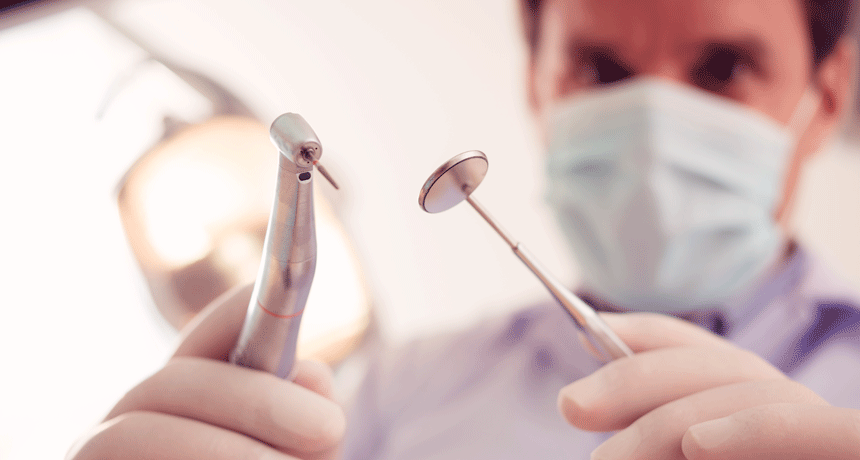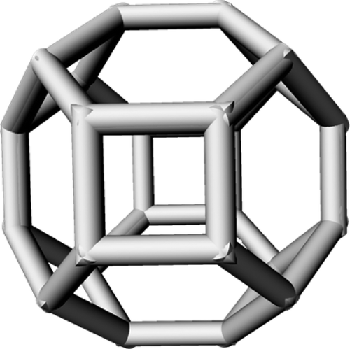
Several years ago, Dean Ho bit into a sandwich and chipped a tooth. His dentist patched it up, but several months later the tooth started throbbing.
“It was the worst pain I’d ever felt in my life,” Ho recalls.The inside of the tooth’s root had become infected. Now it needed a root canal treatment. Many patients dread this procedure. It’s where a dentist drills into the tooth and then scrapes out the infected tissue. Afterward, this new hole is filled with a rubber-like material. More than he feared this process, Ho was intrigued by it.
He didn’t understand exactly what a root canal was. That might come as a surprise, since he works at the School of Dentistry at the University of California, Los Angeles. But Ho doesn’t treat patients. He is a bioengineer. Indeed, he heads a lab that uses science and engineering principles to solve problems in biology and medicine.
Reclining in the dental chair, tools and tubes sticking out of his mouth, Ho typed on his smartphone. This curious researcher wanted to “chat” as his dentist set to work. What are you doing? Is it going to hurt? How much longer? When the root-canal treatment was done, Ho had more questions — the kind a bioengineer might ask. Curious about the tooth-filling material, he asked: “Look, is there anything cool about it? Could anything be made better?”
Those timely musings were key.
They spurred the creation of a new material that could improve root-canal treatments for generations to come. Ho isn’t the only scientist who has sunk his teeth into … well, teeth! A similar “what if” moment inspired a Boston biologist to try growing new teeth in the lab. And for one archaeologist, bad teeth have turned out to be a boon. They are chock full of DNA — genetic material that offers clues to the diets and diseases of ancient cultures.A better tooth filling
As Ho learned, infections can be a big and painful problem for root-canal patients. Even after the dentist fills an infected tooth, the seal won’t be perfect. Often it will have little holes. These can allow bacteria to creep in.

Pondering this problem, Ho had an idea. “The wheels were turning while [my dentist] was working on me,” he notes. For years, Ho’s lab had worked with diamonds — not the kind in jewelry, but super-small ones known as nanodiamonds. They’re made from groups of carbon atoms. Each group can be less than a thousandth the width of a human hair. In 2007, his team showed that these teeny pieces of carbon have an unusual blend of flexibility and strength. That suits them for big jobs, such as carrying cell-killing drugs to cancer cells. Since then, Ho’s team has found more uses for nanodiamonds. The material can create sharper medical images and help bone regrow.
At his dentist’s office, Ho had another idea. How about using nanodiamonds to make a better root-canal filler?
Like ordinary diamonds, nanodiamonds are very hard. They can strengthen materials to which they are added. They also are great at latching onto chemicals, including bacteria-killing drugs. These medicines, called antibiotics, can shut down infections. Adding drug-carrying nanodiamonds to the existing filler material could make root-canal treatments more reliable. At the same time, Ho thought, they might keep teeth from getting re-infected.
Back in the lab, he and his coworkers got to work designing this new filler. They compared it to the usual material. For this work, they used teeth that dentists had already extracted from people’s mouths. To fill an infected tooth, dentists need something that’s squishy while it’s being applied, but tough once it hardens. The nanodiamond material looked promising. And lab tests proved it stronger than conventional fillers.
Best yet, this new material indeed can fight infections.

When the researchers spread bacteria onto the two different surfaces, far more bacteria died on the new filler than on the conventional one.
“If the bugs make contact [with the filler], the drug will get them,” Ho says. His team first described this filling material a little more than two years ago in the journal ACS Nano. So far they’ve tried the new filler in three people who needed root canals. When checked six months later, the new material was holding up well and the patients had no further tooth decay. The researchers reported these data in the Nov. 7, 2017 Proceedings of the National Academy of Sciences. Now they’re gearing up for a larger study with 30 people.
Ho also wants his research to motivate “future explorers of the world” — like his preschooler children. “Wouldn’t it be cool if the kids could actually know what I’m doing? There’s impact that can be made beyond the technical side,” he says. Toward that end, Ho has been working with an artist to create a comic book. It not only explains what nanodiamonds are but also how they’re used. (Take a peek at the comics, which you can find at the bottom of this webpage: http://www.projectndx.com/new-page/.)
Lab-grown teeth
Sometimes, teeth rot so much that they cannot be fixed by a root-canal treatment. Instead, dentists have to…
The post Cool Jobs: Drilling into the secrets of teeth appeared first on FeedBox.